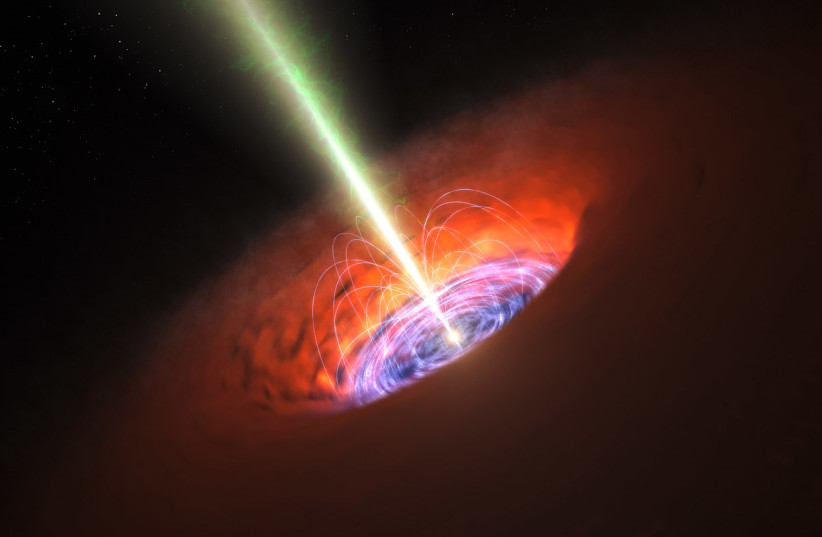Black hole blasted Earth with near light-speed jet of matter - study
The jet of matter, appearing as a flash of light brighter than 1,000 trillion suns, originated from a supermassive black hole 8.5 billion light years away and traveled at 99.99% the speed of light.
The Earth may have been touched by a jet of matter that blasted out of a supermassive black hole long after it had devoured a star, a new study has revealed.
This conclusion was reached after careful observation of a signal found after a powerful flash of light brighter than 1,000 trillion suns was spotted in a part of the night sky, where nothing like it had ever been seen.
The findings of this study were published online on Wednesday in the peer-reviewed academic journal Nature Astronomy.
Supermassive black holes, jets of matter and the devouring of stars: Tidal disruption events (TDEs)
The strange signal, designated AT 2022cmc, was first spotted on February 11 by astronomers at the Palomar Observatory's Zwicky Transient Facility in California. This team posted its observation in a newsletter on February 14. This sparked collaborative efforts to research this mysterious flash.

The scientists concluded that AT 2022cmc is a jet of matter blasting out of a supermassive black hole at 99.99% the speed of light after the black hole began devouring a star.
This is known as a tidal disruption event (TDE), called such because the black hole's tidal forces are what tear the unlucky star apart.
Tidal disruption events are nothing new. Scientists have known about them for a long time. They are useful ways of detecting supermassive black holes and measuring how fast they devour more stars.
Supermassive black holes are also nothing new. As their name implies, supermassive black holes are considerably more massive than other black holes. Overall, there tends to be one supermassive black hole per galaxy, with our own Milky Way Galaxy being home to Saggitarius A* in the galactic center.
But AT 2022cmc didn't come from our own galaxy.
According to the study, this burst of light originated from a different supermassive black hole around 8.5 billion light-years away. To illustrate just how massive that distance is, that's practically – though not literally – halfway across the universe.
This means that this is the farthest supermassive black hole TDE ever detected by scientists.
Why Do Black Holes Shoot Jets?
But what about the brightness? What made it appear so brightly in the sky?
There are a few reasons for this, the first of which is its sheer speed.
But another factor that made it appear so bright despite being from so far away is due to Doppler-boosting. Essentially, the black hole's jet of matter was aimed precisely at Earth. Therefore, rather than getting a passing glance at the TDE, observers on Earth are instead met with its full brightness.
It functions similarly to a siren on an emergency vehicle. The sirens start on a higher pitch and slide down, but it only sounds like it's going lower because the vehicle itself is driving away. If the siren was heading right for the listener, its pitch wouldn't change.
That, essentially, is what happened here with AT 2022cmc.
The fact that it's moving so fast means that its supermassive black hole must be eating a lot of stars very quickly, with the researchers estimating it devours one star half the mass of the Sun per year.
There is still much more we don't understand, such as how supermassive black holes actually launch these jets of matter in the first place.
But as science makes further advances in telescope technology, the answers to these questions may be getting closer than ever.


No comments:
Post a Comment
Stick to the subject, NO religion, or Party politics